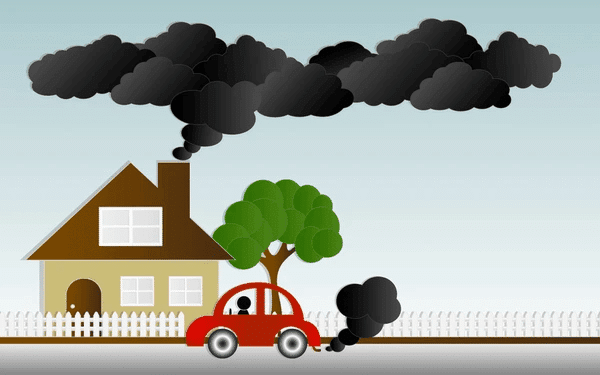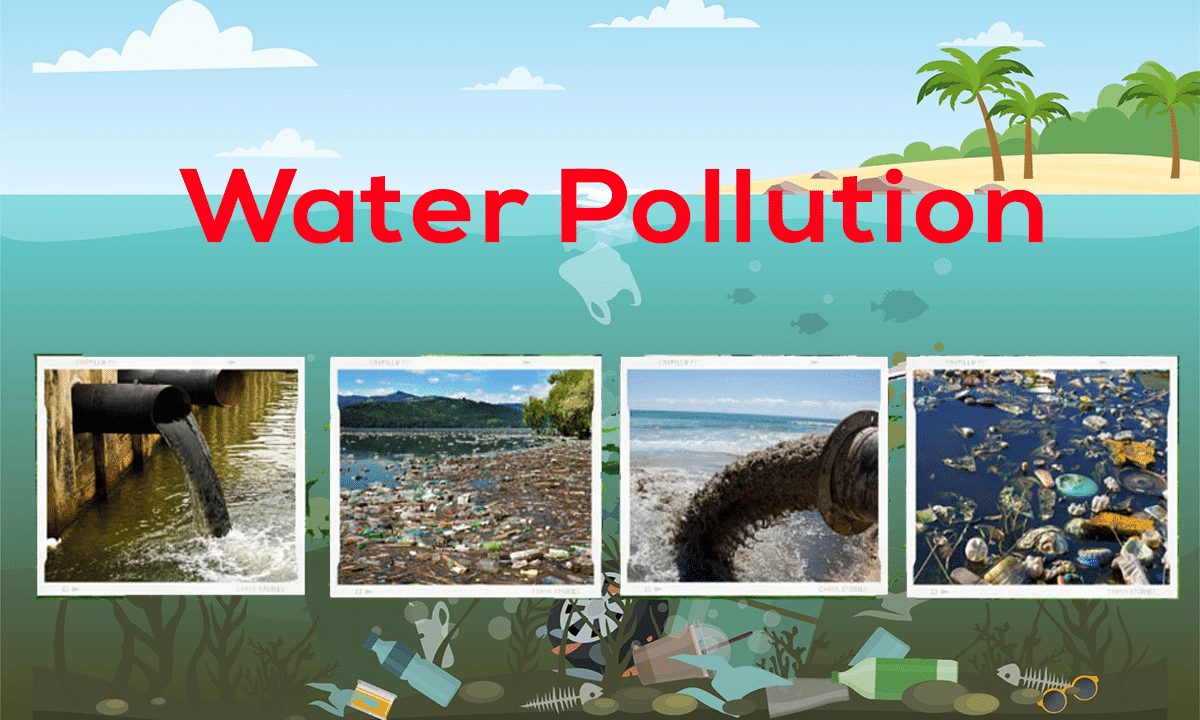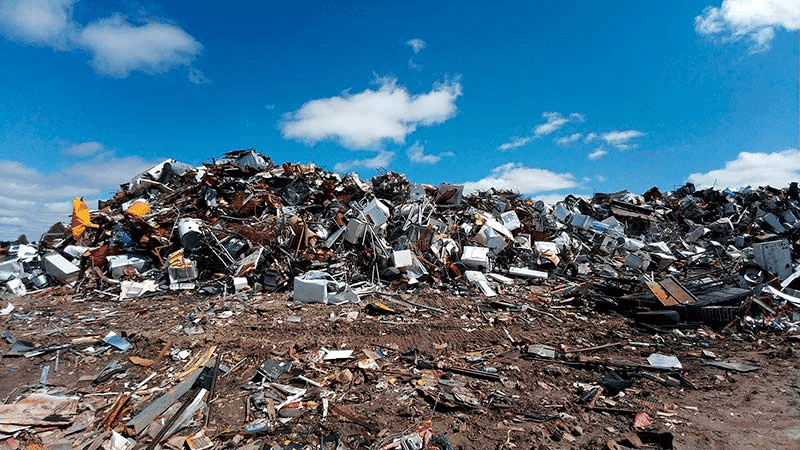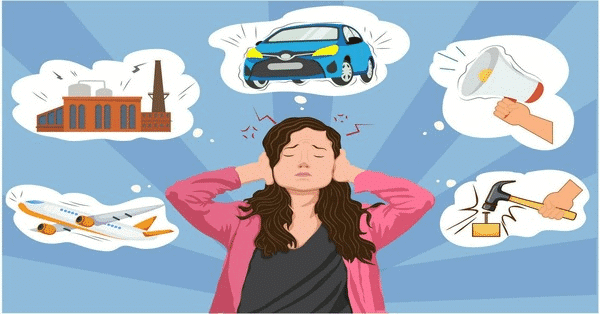Green and Clean Earth Chapter Notes | Science for Class 4 PDF Download
| Table of contents |

|
| Ways to Save Trees |

|
| Our Environment |

|
| Air Pollution |

|
| Water Pollution |

|
| Soil Pollution |

|
| Noise Pollution |

|
Earth is a planet that has living things like plants, animals, and humans, as well as many non-living things. Some of the non-living things found on Earth include air, water, mountains, soil, rocks, and clouds.
Activity Time
- In the given picture, identify the living and non-living things. Write L for living and N for non-living in the boxes provided.
Importance of Trees
- Trees are very important to us because they provide many things like fruits, vegetables, grains, medicines, wood, paper, and rubber.
- They also give us oxygen to breathe. Trees help keep the soil in place with their roots, preventing it from being washed away by wind or water.
- However, people are cutting down trees to make more land for the growing population. This large-scale cutting down of trees is called deforestation.
- Deforestation is causing us to lose forests and the wildlife that lives in them.
Ways to Save Trees
- Protecting Trees: Trees are very important for our planet. They give us clean air, homes for animals, and help keep the soil healthy. To save trees, we should not cut them down unless it is absolutely necessary. If we do need to cut down trees, we should plant more trees than we cut down. This practice is called afforestation, and it helps to increase the number of trees in our environment.
- Saving Paper: A lot of trees are used to make paper, so we should be careful not to waste it. One way to save paper is by using both sides of a sheet before discarding it. This simple action can help reduce the number of trees cut down for paper production.
- Using Alternative Fuels: Wood is often used as fuel for cooking, but this practice can harm trees and the environment. Instead, we should use biogas or LPG (Liquefied Petroleum Gas) for cooking. These alternatives are more environmentally friendly and help reduce the demand for firewood, which can lead to deforestation.
- Planting and Caring for Trees: Everyone can help by planting trees and taking care of them. Trees need proper care to grow healthy and strong, and when we all pitch in, we can make a big difference in our environment.
- Celebrating Tree Planting Events: In India, Van Mahotsav is celebrated every year in July for one week. During this time, lakhs of trees are planted all over the country. This festival encourages people to plant and care for trees, helping to increase the greenery in our environment.
- Observing World Environment Day is observed globally on June 5th every year. On this day, people come together to discuss ways to save the environment, including the protection of trees and forests. It is an important day to raise awareness about environmental issues and encourage actions that benefit the planet.
Our Environment
Our environment consists of both living and non-living things, and we rely on it for everything we need.
- We obtain food, furniture, clothing, books, newspapers, and many other items from our environment.
- However, various human activities are harming the environment.
- For instance, smoke emitted by factories and vehicles is polluting the air, which can make us sick.
- Pollution refers to any harmful or uncomfortable change in the environment caused by humans, and the substances responsible for this pollution are called pollutants.
Air Pollution
 Air pollution occurs when harmful substances, such as smoke from factories and vehicles, contaminate the air, making it unsafe to breathe. Other activities, like burning wood and waste materials, also contribute to air pollution. Additionally, bursting firecrackers releases a significant amount of smoke, further polluting the air.
Air pollution occurs when harmful substances, such as smoke from factories and vehicles, contaminate the air, making it unsafe to breathe. Other activities, like burning wood and waste materials, also contribute to air pollution. Additionally, bursting firecrackers releases a significant amount of smoke, further polluting the air.
Keeping the Air Clean
To combat air pollution and keep the air clean, we can take several simple yet effective measures:
- Plant More Trees: Trees play a crucial role in purifying the air by absorbing carbon dioxide and releasing oxygen. Planting more trees in our surroundings can significantly improve air quality.
- Switch Off Engines at Red Lights: When waiting at traffic signals, turning off vehicle engines can reduce the emission of harmful gases into the air.
- Walk or Use a Bicycle for Short Distances: Opting for walking or cycling instead of using motor vehicles for short distances can help reduce air pollution caused by vehicle emissions.
Water Pollution
 Water pollution occurs when water bodies are contaminated by various activities such as washing clothes or utensils in them. Additionally, dirty water from homes and factories is often discharged into drains, which eventually lead to water bodies, causing pollution. Farmers also contribute to water pollution by using fertilizers that are washed away by rain and end up mixing with water bodies.
Water pollution occurs when water bodies are contaminated by various activities such as washing clothes or utensils in them. Additionally, dirty water from homes and factories is often discharged into drains, which eventually lead to water bodies, causing pollution. Farmers also contribute to water pollution by using fertilizers that are washed away by rain and end up mixing with water bodies.
Keeping Water Clean
- Do Not Throw Garbage into Water Bodies: It is essential to keep water bodies clean by not disposing of garbage in them.
- Do Not Wash Clothes in or near Water Bodies: Washing clothes in or near water bodies should be avoided to prevent pollution.
- Treat Dirty Water from Homes and Factories: Dirty water from homes and factories should be treated at water treatment plants before being discharged into water bodies.
Soil Pollution
 Soil pollution occurs when harmful wastes mix with the soil. This can happen due to wastes from homes, factories, and agricultural farms.
Soil pollution occurs when harmful wastes mix with the soil. This can happen due to wastes from homes, factories, and agricultural farms.
Keeping the Soil Clean
To keep the soil clean, we should:
- Avoid throwing garbage carelessly.
- Stop using plastic bags to reduce waste.
Noise Pollution
 Noise pollution is caused by loud and unpleasant sounds, such as those from automobiles, aeroplanes, and factories. These noises can cause discomfort to people.
Noise pollution is caused by loud and unpleasant sounds, such as those from automobiles, aeroplanes, and factories. These noises can cause discomfort to people.
Ways to Prevent Noise Pollution
- Play music and television at a low volume.
- Avoid honking unless it is necessary.
Biodegradable and Non-biodegradable Waste
- Biodegradable waste refers to waste that comes from organisms, such as fruits and vegetable peels, paper, and leftover food. These materials can decompose and mix with the soil.
- Non-biodegradable waste includes materials like plastic bags, bottles, glass, and rubber. These items do not rot and can remain in the soil for many years without breaking down.
How We Can Save Our Environment
To help save our environment, we can follow the 3Rs: Reduce, Reuse, and Recycle.
- Reduce: We should only buy things that we really need and choose reusable items. For example, using steel plates instead of disposable ones.
- Reuse: Find ways to use things again and again before throwing them away. For instance, empty jars can be repurposed for storage.
- Recycle: Many wastes can be recycled to create new products. For example, plastic items can be transformed into buckets and tubs.
In addition to the 3Rs, here are some other important rules to keep the environment clean:
- Say "No" to plastic bags.
- Always throw waste into dustbins.
|
49 videos|156 docs|34 tests
|
FAQs on Green and Clean Earth Chapter Notes - Science for Class 4
| 1. Why are trees important for our environment? |  |
| 2. How can we save trees in our daily lives? |  |
| 3. What are the main types of pollution affecting our environment? |  |
| 4. How can we keep the air clean? |  |
| 5. What is the difference between biodegradable and non-biodegradable waste? |  |















